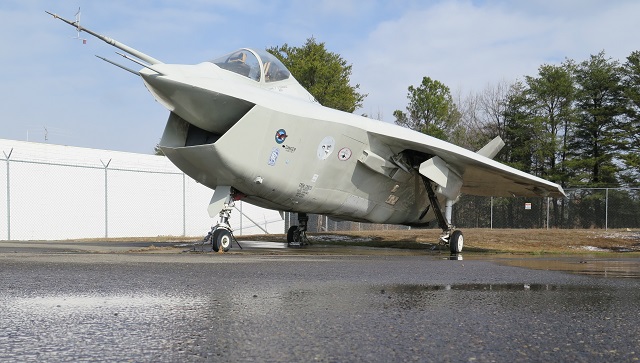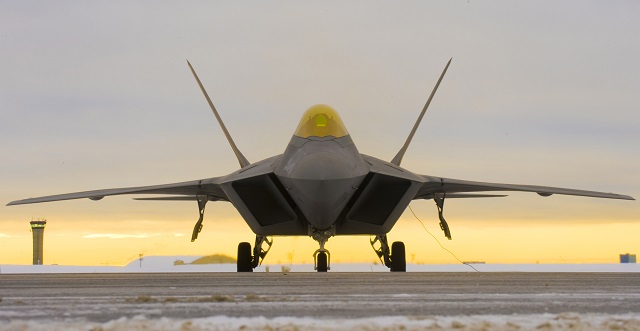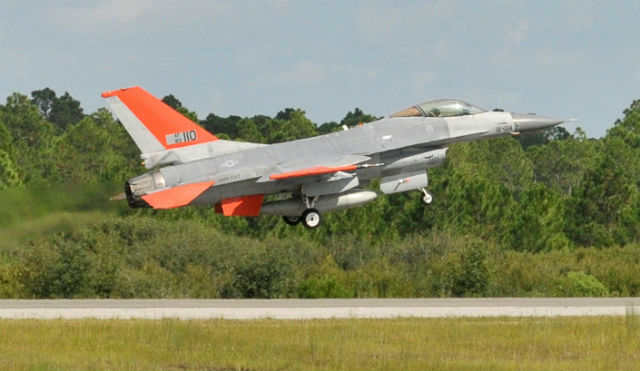Lockheed Martin has warned against rushing into a sixth-generation fighter programme without first boosting F-35 Lightning II numbers and implementing a “robust” modernisation programme to keep fifth-generation F-22s and F-35s capable against new counter-air threats.
The Pentagon has plans to buy 2,443 F-35s, but the programme has been delayed by six years and almost doubled in cost compared to projections in 2001 because of problems during development.
However, Lockheed’s Skunks Works chief says once fully fielded, the combination of F-22s and F-35s will achieve the air dominance that America desires for the next 30 to 40 years.
“The quicker we can get a force structure that’s heavily populated by fifth-generation airplanes the better,” says Rob Weiss, who has led Lockheed’s advanced development programmes office since 2013. “We should minimise the investment in fourth-generation airplanes: nothing beyond what is needed to maintain the force structure because obviously fourth-generation airplanes aren’t leaving the force structure immediately.”

US Air Force
His comments, made at a Lockheed media event in Washington DC this week, come as the air force and navy conduct an analysis of their future “air dominance” needs, more specifically, something to replace the Boeing F/A-18 Super Hornet and perhaps F-15.
The two services are working together on common components, like propulsion systems and defensive suites, but will likely press forward with separate fighter platforms tailored to their different needs.
The air force has suggested that some companies, like Lockheed, might push block upgrades of existing aircraft as an air dominance solution instead of an entirely new aircraft, but Northrop Grumman and Boeing need some way to break back into the high-end combat jet market.
Northrop builds F-35 centre fuselages and has the B-21 strategic bomber contract, but Boeing has nothing to succeed the F/A-18 and F-15 at its military aircraft plant in St Louis, Missouri since its X-32 lost to the F-35 for the “winner-takes-all” Joint Strike Fighter contract in 2001.

Boeing X-32 STOVL demonstrator at Patuxent River Naval Air Museum in Maryland
James Drew/Flight International
Lockheed, now playing from a position of fifth-generation strength, is calling for a three-pronged approach to future fighter furnishing: procure the total number of F-35s faster, implement a more aggressive modernisation strategy for the F-22 and F-35, and spend more time maturing “revolutionary” sixth-generation capabilities before committing to a new aircraft programme.
“As we look at F-22s and F-35s, those airplanes have the capacity to maintain an advantage over the threat for the next 30, 35 to 40 years but it requires a modernisation roadmap, just like we’ve done with every other airplane in history, to maintain their advantage relative to the threat,” says Weiss. “The pace is, in my view, too slow.”

US Air Force
The long-time Lockheed aeronautics executive says the US services could also make better use of the capabilities they have through human-machine teaming and the pairing of assets through “distributed networks capable of surviving in contested environments”.
This could mean capabilities like the so-called arsenal plane that would essentially be an airborne standoff weapon storehouse that would launch volleys of missiles targeted by front-line fighters with targeting pods and sensors. It could also mean cooperative unmanned teammates like the Boeing QF-16 flying alongside manned fast jets.

Unmanned QF-16 Target Drone
US Air Force/Boeing
“The way to get there is to start operating manned and unmanned systems together,” he says. “That’s another area of modernising what we have; not necessarily having to design a whole lot of new systems, but enhancing the capability we do have, and that includes, by the way, some artificial intelligence or machine learning, and there's some of that we’re doing.”
Weiss pointed to the recent victory of a Google-developed artificial intelligence algorithm over the grand master of the ancient Chinese strategy game “Go” as an example of the type of machine learning that Lockheed is pursuing. The company will demonstrate its AI capabilities “in a warfighting environment” later this year, he says.
Source: FlightGlobal.com



















